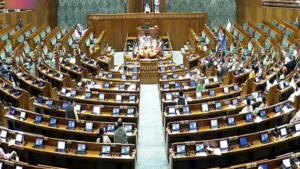In a historic 4-3 decision on November 8, 2024, the Supreme Court overturned its 1967 ruling in the Azeez Basha case, which had denied Aligarh Muslim University (AMU) minority institution status. This landmark judgment paves the way for AMU’s minority status to be reassessed based on its historical, administrative, and founding context, under the protective framework of Article 30 of the Indian Constitution. While AMU’s status remains undecided, the verdict has crucial implications for how educational institutions are recognized under constitutional provisions.
Background of the Case
In 1967, the Supreme Court’s Azeez Basha judgment ruled that AMU was not established or administered by a Muslim minority community, thereby disqualifying it from claiming minority status under Article 30(1). Despite subsequent legislative amendments, including the 1981 recognition of AMU’s Muslim origins, the issue remained contentious, culminating in this fresh review by a seven-judge bench.
Core of the Judgment
The majority opinion, authored by Chief Justice D.Y. Chandrachud, emphasized that statutory recognition does not inherently erase an institution’s minority status. This refined interpretation of Article 30(1) asserts that institutions created by minority communities retain their minority character, even if recognized through legislation. The court stressed that the institution’s history, intent of its founders, and its continued administration in alignment with minority community interests must be assessed to determine minority status.
The Three-Part Test for Minority Status
The majority outlined a three-step framework for evaluating AMU’s minority status:
Origins: Clear evidence that AMU’s founding was tied to the Muslim community.
Purpose: Demonstrating that AMU primarily serves the interests of the Muslim community.
Administrative Structure: Assessing the governance structure and its alignment with the community’s interests.
Significance for AMU and Other Institutions
The court’s ruling has immediate implications for AMU, as it may now reassess its minority status based on these criteria. If declared a minority institution, AMU would be exempt from certain reservations for Scheduled Castes, Scheduled Tribes, and other groups. The decision also has broader implications for institutions across India, particularly those established before the Constitution’s adoption, as it opens up new avenues for claiming minority status.
Dissenting Opinions
Justices Surya Kant, Dipankar Datta, and Satish Chandra Sharma dissented, expressing concerns over procedural issues and questioning the legitimacy of AMU’s minority claim. They warned that such a ruling could distort historical facts and undermine judicial credibility.
Impact on Minority Rights Jurisprudence
This decision has not only revisited AMU’s status but also set a new precedent in minority rights jurisprudence in India. The judgment reinforces the need for a nuanced understanding of constitutional protections for minority institutions, balancing autonomy with non-discrimination.
key points about Aligarh Muslim University (AMU)
| Topic | Key Points |
|---|---|
| Foundation | Founded in 1875 as Muhammadan Anglo-Oriental College by Sir Syed Ahmad Khan. |
| Location | Located in Aligarh, Uttar Pradesh, India. |
| Status | Statutory University, under the Aligarh Muslim University Act, 1920. |
| Minority Status | AMU’s minority status has been contested, with the Supreme Court overturning its 1967 decision in 2024, requiring a fresh assessment. |
| Historical Importance | Played a key role in the socio-political and educational upliftment of Muslims in India. |
| Academics | Offers undergraduate, postgraduate, and doctoral programs across various disciplines. |
| Campus | Spread across 1,100 acres with modern infrastructure, research centers, and hostels. |
| Administrative Structure | Led by a Vice Chancellor, AMU is governed by a Court and a Senate. |
| Significant Alumni | Includes notable personalities like Dr. Zakir Hussain (former President of India), and many prominent politicians, scientists, and academicians. |
| Role in Indian Education | Known for contributing significantly to higher education, especially in fields like engineering, law, and humanities. |
| Legal Status | Initially, its minority status was denied in the 1967 Azeez Basha case, but the 2024 SC verdict allowed for reassessment. |
| Contribution to Society | Strong emphasis on social justice, intellectual development, and empowerment of minority communities. |
Summery of the News
| Topic | Key Points |
|---|---|
| Why in News | The Supreme Court ruled on the minority status of AMU, overruled the 1967 Azeez Basha case, allowing a reassessment of AMU’s minority status. |
| Supreme Court Decision | A 4-3 verdict allowed reconsideration of AMU’s minority status based on its historical origins, purpose, and administration. |
| Article 30(1) of Constitution | Grants minorities the right to establish and administer educational institutions. |
| AMU Founding History | AMU was founded by the Muslim community in 1875 as a Muslim minority institution. |
| Court’s Test for Minority Status | AMU’s minority status will be evaluated on three criteria: origins, purpose, and administration. |
| Dissenting Opinion | Justice Datta argued that AMU’s minority claim was based on outdated history and should be reconsidered. |
| State Aid and Minority Status | Receiving state aid does not negate AMU’s minority status, as clarified by the majority ruling. |
| AMU’s Legal Status | AMU is considered a statutory body, and its status as a minority institution must be reassessed. |
| Article 15 | Prohibits discrimination on grounds of religion, race, caste, sex, or place of birth. |
| Article 21 | Provides the right to life and personal liberty, relevant in cases involving educational access. |
| Justice in AMU Case | The case involved a 4-3 decision, indicating a close interpretation of the law. |
| CM and Capital | Not applicable to this case as it is a legal decision. |




 Prime Minister Releases Commemorative Po...
Prime Minister Releases Commemorative Po...
 Parliament Passes SHANTI Bill, AERB Gets...
Parliament Passes SHANTI Bill, AERB Gets...
 Viksit Bharat G RAM G Bill Passed in Lo...
Viksit Bharat G RAM G Bill Passed in Lo...







